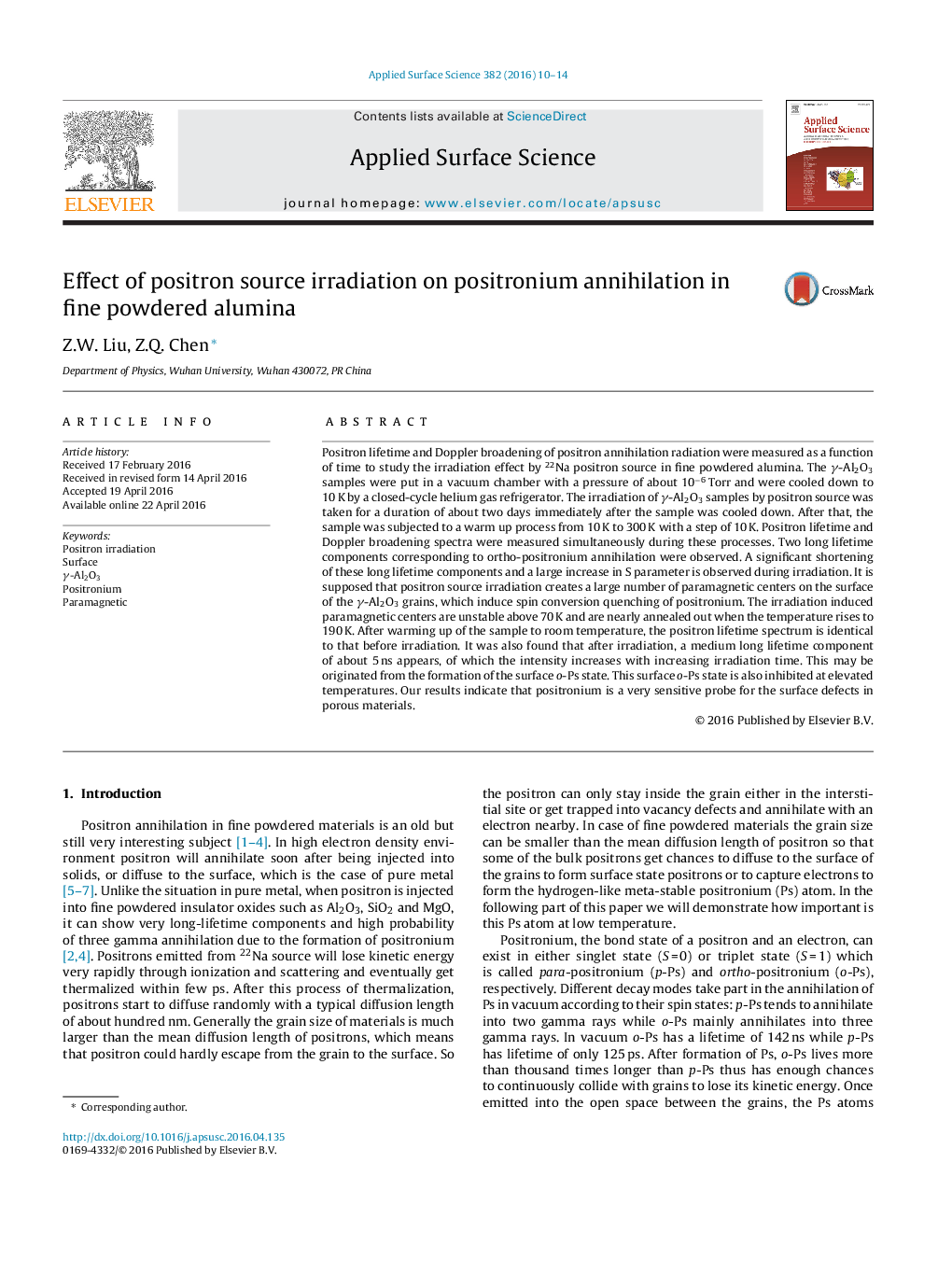| Article ID | Journal | Published Year | Pages | File Type |
|---|---|---|---|---|
| 5347466 | Applied Surface Science | 2016 | 5 Pages |
Abstract
Positron lifetime and Doppler broadening of positron annihilation radiation were measured as a function of time to study the irradiation effect by 22Na positron source in fine powdered alumina. The γ-Al2O3 samples were put in a vacuum chamber with a pressure of about 10â6 Torr and were cooled down to 10 K by a closed-cycle helium gas refrigerator. The irradiation of γ-Al2O3 samples by positron source was taken for a duration of about two days immediately after the sample was cooled down. After that, the sample was subjected to a warm up process from 10 K to 300 K with a step of 10 K. Positron lifetime and Doppler broadening spectra were measured simultaneously during these processes. Two long lifetime components corresponding to ortho-positronium annihilation were observed. A significant shortening of these long lifetime components and a large increase in S parameter is observed during irradiation. It is supposed that positron source irradiation creates a large number of paramagnetic centers on the surface of the γ-Al2O3 grains, which induce spin conversion quenching of positronium. The irradiation induced paramagnetic centers are unstable above 70 K and are nearly annealed out when the temperature rises to 190 K. After warming up of the sample to room temperature, the positron lifetime spectrum is identical to that before irradiation. It was also found that after irradiation, a medium long lifetime component of about 5 ns appears, of which the intensity increases with increasing irradiation time. This may be originated from the formation of the surface o-Ps state. This surface o-Ps state is also inhibited at elevated temperatures. Our results indicate that positronium is a very sensitive probe for the surface defects in porous materials.
Related Topics
Physical Sciences and Engineering
Chemistry
Physical and Theoretical Chemistry
Authors
Z.W. Liu, Z.Q. Chen,
